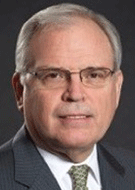How Radiologists Overcome Barriers to Provide Imaging in Low to Middle Income Countries
Access challenges, equipment expenses and personnel shortages affect care



Access to imaging can be a major barrier for millions of people living in low to middle income countries (LMICs) across the world. Radiologists are finding alternatives to deliver high quality care.
“The global medical imaging community is committed to improving health in LMICs,” said Bibb Allen, MD, diagnostic radiologist at Grandview Medical Center in Birmingham, AL, and president of the International Society of Radiology (ISR). “Caring for patients with non-communicable diseases including cancer, stroke and other neurological diseases, heart disease, and trauma all require advanced imaging for screening, medical decision making and guidance for surgical and non-invasive therapies.”
Increasing access to imaging is necessary to advance the WHO initiative for universal health coverage.
“It has been shown that investing in medical imaging can dramatically decrease mortality from non-communicable diseases with a robust return on investment by saving downstream health care costs and increasing, not only a patient’s number of years left, but the quality of those years,” Dr. Allen said.
Scarce Equipment and High Expenses
There is less than one CT scanner per million inhabitants in LMICs compared to 40 scanners per million in high income countries, with wider gaps for MRI and more specialized equipment.
But solving access issues goes far beyond the equipment itself, according to Guy Frija, MD, professor emeritus of radiology, Université de Paris France.
“Radiology departments in LMICs are surrounded by a complex ecosystem including the need for specific spaces for equipment, stable power, regular maintenance and future upgrades. All of these aspects are challenging for LMICs, even in large cities,” Dr. Frija said.
While most advanced imaging modalities are expensive and logistically difficult to implement in LMICs, US is a modality that is most “fit for purpose” in low resource areas, according Kristen DeStigter, MD, chief of radiology at the University of Vermont, Burlington, and co-founder of Imaging the World (ITW), a nonprofit focused on implementation of low cost, reliable imaging services in LMICs, including Uganda, Malawi and Kenya.
“US is portable, solar-powered, has a long battery life, an easy user interface and delivers high quality scans,” Dr. DeStigter said. “Its software can now be upgraded online, eliminating the need for in-person maintenance.”
In addition, Dr. DeStigter said, bureaucracy often prevents radiologists from being involved in deciding what equipment to order.
“Most equipment is procured from abroad and can take months to arrive, sometimes even years, with the warranty nearly expired at the time of arrival. Local distributors of radiology equipment are uncommon, sometimes resulting in dissemination of lower quality systems,” Dr. DeStigter said. “Training and applications for the equipment are also challenging. Many units arrive without even a manual, let alone in the local language. Capable biomedical engineers usually can be found for set-up, but physicists are difficult to resource, yet are necessary for safety controls, protocols and monitoring. Skilled maintenance technicians are also under-resourced in LMICs and may have to travel long distances at a great cost.”

Personnel Shortages Affect Access
A lack of equipment paired with a shortage of radiologists can make it even more difficult for patients to get the care they need. Technology can help overcome that challenge.
A screen and refer or “hub-and-spoke model” of imaging care delivery can help providers at the point-of-care in rural villages to capture US “sweeps” and send them to radiologists for remote review.
“ITW has primarily focused on obstetric ultrasound but has an extended model for other diseases and conditions,” Dr. DeStigter said. “We deliver an ‘imaging package’ of the technology, training, telehealth, supervision and quality management. To our organization, this ‘screen and refer’ model is more robust than providing onsite advanced imaging technologies.”
Research has shown that point-of-care obstetric US at rural clinics is cost-effective and saves lives. ITW hopes to impact 15 million lives in sub-Saharan Africa by 2030.
“Catching patients at the point of care is the best opportunity for them to receive imaging, rather than relying on them to come back or to visit a separate imaging facility, as is more common in developed ountries,” Dr. Allen said.
Dr. Frija and his co-authors wrote about the concept of primary health care as the crucial step for enhancing care in LMICs by providing medical services to patients where they are located instead of moving them from remote locations to a different site for services.
Listen as Dr. Frija discusses how radiologists are finding imaging alternatives to deliver high-quality care in LMICs across the world.
There are still many barriers to increasing imaging access in LMICs that will take time, money and research to overcome, but radiologists can play a key role.
Dr. Frija said radiologists hoping to make a difference should visit, listen and understand the issues on the ground to provide better care suited for the needs of the population.
“We cannot just copy and paste what works in developed countries to LMICs,” he said.
While progress has been made, Dr. Allen said he is hopeful for the future.
“Much of the world’s health care is being provided without important tools, such as MRI and CT, and that needs to change,” Dr. Allen said. “As we become more concerned about health equity, we cannot forget the plight of those without access to the care they need, including advanced medical imaging.”
For More Information
Access the Radiology study, ”Increasing Access to Imaging for Addressing the Global Cancer Epidemic.”
Access the Daily Bulletin story, “Bringing Radiology to Low-resource Countries Takes a Global Effort.”
Access the eClinical Medicine papers, “A paradigm shift in point-of-care imaging in low-income and middle-income countries,” and “How to improve access to medical imaging in low- and middle-income countries ?”
Learn about RSNA Global Learning Centers, designed to offer ongoing education and support, improve patient care and increase access to technology at established radiology departments in low- to middle-resource countries.